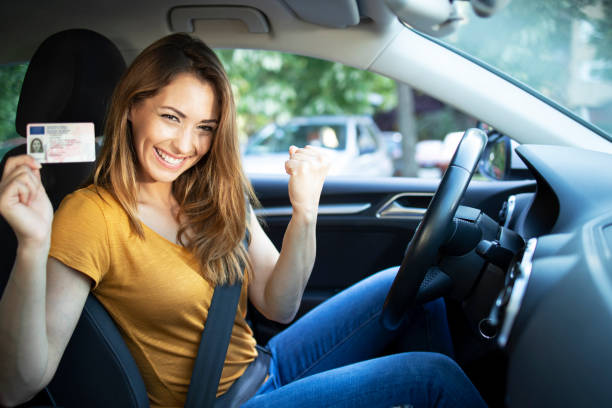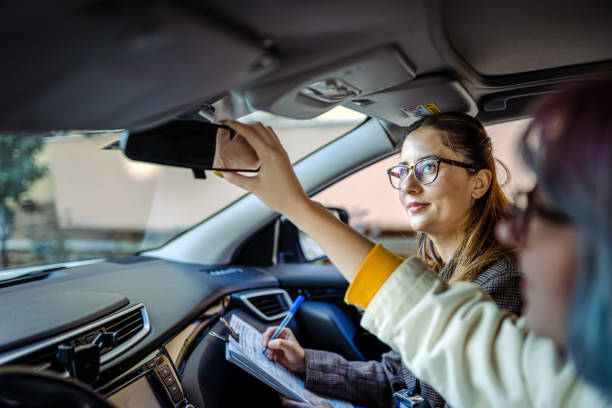
Starting Out with Kansas Learners Permit Rules
Getting a learner’s permit in Kansas is the first exciting and very important step toward driving independence. Know the specific rules and requirements that should assist one in going through a smooth and, above all, safe process. This article is going to explore the essential Kansas learners permit rules, detailing everything from eligibility to the dos and don’ts while holding your permit.
Eligibility Requirements for Kansas Learners Permit
Before you are allowed to drive a vehicle on Kansas public roadways, there are essential qualifications that every prospective driver must meet in order to apply for a Kansas learner’s permit:
- Age: Applicants must be at least 14 years old to qualify for a learner’s permit, allowing young individuals the opportunity to learn driving in a controlled environment.
- Residency: Any applicant must have legal residence in the State of Kansas, providing verifiable ties to the state, which may be needed for records and regulations pertaining to the state.
- Education: Anyone under 16 must be enrolled in and attend an officially approved driver education course by state-sanctioning authorities. This requirement ensures that young drivers are properly schooled in safe driving techniques before they begin to drive solo.
Applying for Your Kansas Learners Permit
The application process for obtaining a Kansas learner’s permit is straightforward but involves several important steps that are designed to ensure that all prospective drivers meet the necessary requirements for safe driving. Here’s what needs to be meticulously followed:
- Documentation: Begin by gathering all the necessary documents that are required to verify your identity, residency, and age. This typically includes your official birth certificate, Social Security card, and documents proving your residency within the state of Kansas. It is important to ensure that all documents are current, legible, and officially recognized to avoid any delays in the application process.
- Vision Test: Undergo a vision screening conducted at the Department of Motor Vehicles (DMV) to ensure you meet the required visual standards for driving. This test is crucial as it assesses your ability to see and react to the driving environment, which is essential for the safety of yourself and others on the road.
- Written Test: Prepare for and complete the written test, which thoroughly assesses your understanding of Kansas driving rules and regulations. This test is designed to measure your knowledge of traffic laws, road signs, and driving safety rules. It is advisable to study the Kansas Driver’s Manual extensively before taking the test to ensure a successful outcome.
- Fee: Pay the designated fee that is required for processing your learner’s permit application. This fee covers the administrative costs associated with issuing your permit and is typically paid at the time of your application submission at the DMV. Be sure to check the latest fee structure and acceptable payment methods before your visit to ensure a smooth transaction.
Rules and Restrictions with Kansas Learners Permit
Once you have successfully obtained your Kansas learners permit, there are several important rules and restrictions that must be adhered to rigorously to ensure both your safety and full compliance with the laws of Kansas:
- Supervised Driving: You are required to drive only under the supervision of an adult who is at least 21 years old and possesses a valid driver’s license. This rule is intended to provide novice drivers with guidance and oversight, enhancing safety by having an experienced driver present.
- Passengers: The only passengers permitted in the vehicle are members of your immediate family. This restriction is designed to minimize distractions and ensure that the focus remains on developing safe driving habits during the early stages of driving.
- Driving Hours: If you are under the age of 16, you are limited to driving between the hours of 5 AM and 9 PM. This limitation is in place to reduce the risk of accidents during nighttime driving, which can be more challenging and hazardous for inexperienced drivers.
- No Mobile Phones: The use of mobile phones while driving is strictly prohibited, with the sole exception being for emergency calls. This rule helps to prevent distractions and promote concentration on the road, significantly reducing the risk of accidents caused by inattention.
Preparing for the Kansas Driving Test

To successfully transition from a learner’s permit to a full driver’s license in Kansas, passing the driving test is a mandatory step. Here are several tips to thoroughly prepare for this crucial assessment:
- Practice: It is essential to accumulate significant driving experience under supervision. If you are under 16, you need to complete at least 25 hours of supervised driving with your Kansas learner’s permit. For those who are 16 or older, a minimum of 50 hours of supervised driving is required. These hours are vital in gaining confidence and comfort behind the wheel.
- Driving Log: Consistently maintain a detailed log of your driving hours. This log must be diligently recorded and must include the date, duration, and a brief description of each driving session. Additionally, each entry in your driving log must be signed by your supervising driver who holds a valid driver’s license. This log will serve as a formal record of your driving practice and is necessary for verification during your driving test application process.
- Skills: Focus intently on mastering essential driving skills that are critical for safe and responsible driving. Key skills to develop include parallel parking, which is often considered challenging by new drivers; lane changing, which requires good judgment and awareness of surrounding traffic; and a thorough understanding of road signs, which are fundamental to navigating roads safely and correctly. Mastery of these skills will not only help you pass your driving test but will also ensure that you are well-prepared for independent driving.
Conclusion
Navigating the Kansas learners permit rules doesn’t have to be complicated. By understanding the eligibility requirements, application process, and the key rules and restrictions, you’ll be well on your way to becoming a skilled and safe driver. Remember, obtaining your learners permit is just the beginning of a lifelong journey of driving responsibly.
By adhering to the Kansas learners permit rules, you not only ensure your safety but also set a foundation for a responsible driving attitude that will benefit you throughout your life. So, take this step seriously, prepare thoroughly, and drive safely!
FAQ
A: If you are under 16, you must hold your learners permit for at least one year. If you are 16 or older, the period is reduced to six months.
A: No, you must always be accompanied by a licensed adult who is at least 21 years old.
A: You should report it to the DMV immediately and apply for a replacement. There is a fee for issuing a replacement permit.
A: Yes, while many states recognize out-of-state learners permits, the rules and restrictions from your home state still apply. It’s advisable to check the specific rules of the state you plan to drive in.


